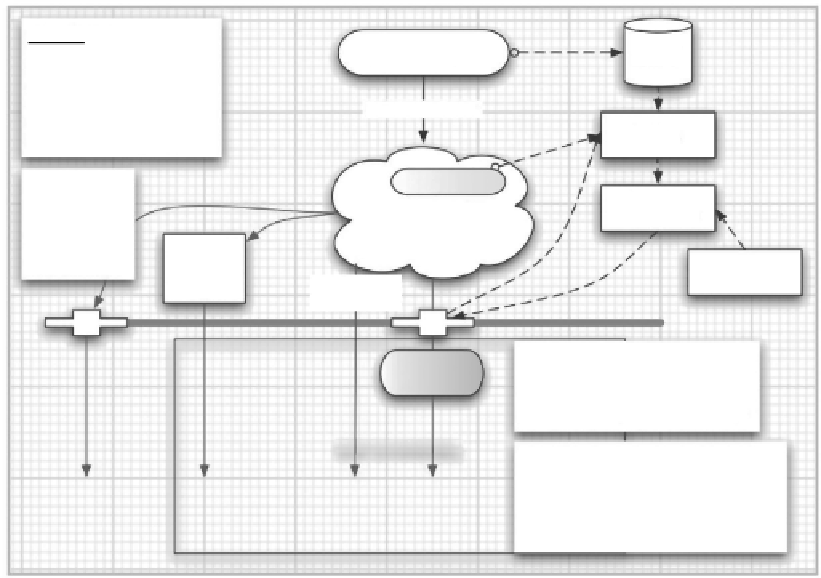Environmental Engineering Reference
In-Depth Information
There are many ways in which the current geotechnical risk analysis is evolving. Three
ways that may eventually prove of importance are system simulation, stress or scenario test-
ing, and dynamic risk analysis and management. Certainly, there are other trends afoot, but
the authors are less familiar with them.
12.9.1 Systems simulation methods
Systems simulation methods arise from the observation that the reliable performance of a
system such as a dam, reservoir, diversion structure, and so on depends on the time-varying
demands placed upon it by geology, hydrology, operating rules, the interactions among a
cascade of reservoirs, and vagaries of operator interventions and natural disturbances. In
managing such systems, the goal is to bound the likelihood of events that might lead to a loss
of control over stored-water volume and releases. The function of such systems is to retain
water volumes and to pass flows in a controlled way
(
Figure 12.7
)
.
Adverse performance typically arises from unanticipated combinations of loadings and
responses within the normal operating ranges of a dam's performance. That is, failures
often do not occur under the extreme loadings considered in the design, but under the
uncommon combination of relatively common things happening. For example, instrumen-
tation misperforms; so, pool levels are allowed to rise, simultaneously ice has formed on
the spillway gates that then cannot be opened sufficiently to accommodate necessary dis-
charges, and finally the operator misperceives the danger and an accident follows. Failures
often occur because several and sometimes not unusual deviations from normal conditions
occur simultaneously.
Factors:
Loads
Structure response
Controls
Human operations
O&M
Malicious intent
Catchment
Forecast
U/S inflow
SCADA
Reservoir:
Level
Ice
Debris
Wave
Sediments
Sensors
Control
Manual/Auto
Reservoir
Power
house
Operator
Bottom
outlet
AUX
Spillway capacity:
Water level
Debris, Ice
Condition (Maintenance)
Energy
DAPN
D/S channel
Discharge rate:
Inflow—Water level
SPW capacity
P/S capacity
Energy dissipation capacity
Figure 12.7
System of flow-control and discharge functions for a single dam. (From Baecher, G.B. et al. 2014.
Second-Generation Risk Analysis for Dam Safety
. Toronto.)




Search WWH ::

Custom Search